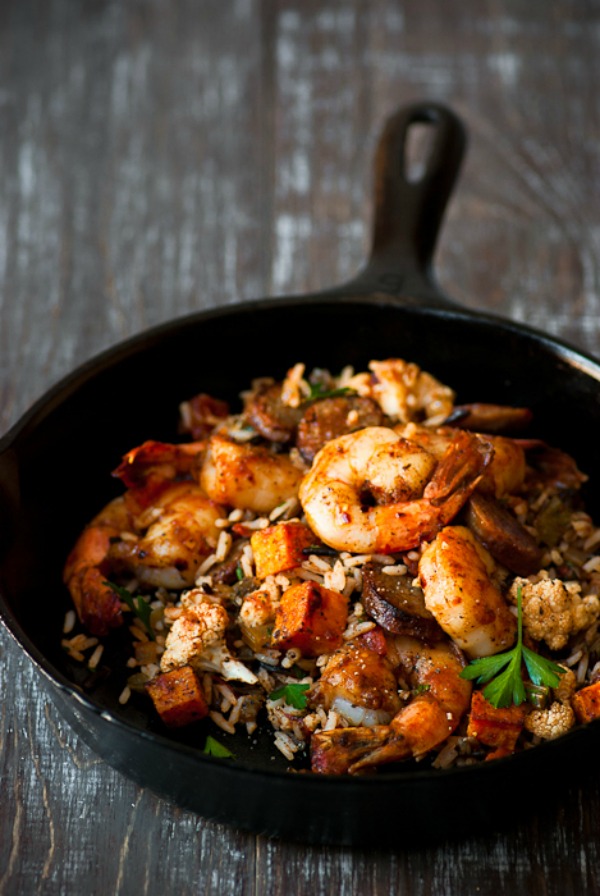 What separates an idiot from a cook? Timing. Are you about to cut those ghost peppers without slathering olive oil on your hands? Oh dear. Found on AskReddit, the following question was posed to the professionals — chefs, sous chefs, line cooks: What tricks and conventions do you use everyday that amateur home cooks can benefit from?
What separates an idiot from a cook? Timing. Are you about to cut those ghost peppers without slathering olive oil on your hands? Oh dear. Found on AskReddit, the following question was posed to the professionals — chefs, sous chefs, line cooks: What tricks and conventions do you use everyday that amateur home cooks can benefit from?
The answers came readily. Longtime Reddit users, who had never posted before, felt compelled to share their bits of knowledge from the kitchen. So tune in below for hacks and wisdom from the professionals
____
Freeze Tomato Juice into Savory Ice Cubes
If you’re cutting a lot of tomatoes, use a cutting board with a trough. Collect the juice that weeps out and pour into an ice cube tray. Freeze ’em for when you need them to add some tomato flavor sauces, soups, etc. This works for pretty much any fruits and vegetables that weep when cutting. You paid for that juice, so you might as well use it, and its usually highly flavorful.
Sprinkle Chopped Garlic with Salt
When chopping garlic, dice it up really finely with your knife, then sprinkle some salt on it and use the flat of your knife to grind the salt into the garlic. This helps to further mince the garlic, as well as to season it and bring out the flavour more. Remember this means you need less salt in your dish.
How to Slice an Onion Without Cutting Your Fingers Off
There is a far easier (safer?) way to dice onion. Start by cutting the onion in half, from root to top. The then cut 1/2 inch off the top, and peel. Then, instead of cutting horizontally through the onion as you did in step two, cut vertically. Position your knife near one edge, and plunge the tip into the onion near the roots (but don’t cut through them), and cut all the way through to the top. Continue across the onion until you reach the other side. Then rotate 90 degrees, and cut vertically across your onion from top to root. No precarious knife skills needed, and a fast dice every time. I would do a handy graphic, but I’m on redistributed mobile.
How to Make Epic Mashed Potatoes
Next time you want to make mashed potatoes bake WHOLE potatoes on a bed of salt on a baking sheet.
Poke a few holes and cook until you can easily pierce them with a knife. Peel them (it should be very easy) and SAVE THE SKINS.
In a pot, fry the skins in some butter for about 2 minutes over medium heat. Add about 1/2 cup of milk and let it get warm with the potato skins still in it.
Strain the milk through a strainer, add it to your cooked potatoes, add salt and paper and whip to your preferred consistency.
It’s a little more work than normal but I promise it will be the best potatoes you’ve ever had. Also, you can save the salt for future uses – no need to throw it out.
NEVER Fry Bacon
Never fry bacon, bake it in the oven on a baking pan. Less splatter, less raw ends and crumbly middles, less work.
edit: about 400-420 degrees F works best.
Coat Your Hands in Olive Oil Before Touching Habenero
When handling habanero or other extremely hot peppers, I coat my hands in a teaspoon of olive oil before finely dicing the peppers. Get the oil thoroughly under and around fingernails. After handing natures napalm with oily hands I find that the hot stuff washes off far more easily with some dish detergent.
Pineapple + Soy Milk = Pineapple Soy Cream
Organic chemistry will blow your mind.
Put pineapple chunks in soy milk. Wait for a couple of hours. The proteins in the soy milk will solidify: you now have delicious pineapple flavored soy cream.
“Respect the Alliums”
Culinary School Grad/Line Cook(Kitchen Supervisor) here.
First and foremost would be having a good handle on how to care and use a french knife properly. My biggest complaint when it comes to home cooking is most people have no respect for the most valuable tool in our arsenal.
Having a basic understand of flavor composition is also very handy. Do yourself a favor and find a website or book ( In my case, Culinary Artistry by Andrew Dorenburg and Karen Page). Having the understanding of what flavors work and what drinks pair well with foods is a godsend if you’re looking to impress. It helps me immensely when looking to whip up something new or when I’m sorting through leftovers to make a soup.
Respect the Alliums. That’s your garlic, onion, and leeks. There is a reason that they are the basis for so many cultural foods, THEY’RE FANTASTIC. Nuff Said.
Buy yourself some non-iodized salt and a pepper cracker.
Take special care to prepare your cooking equipment. If it be pregreasing pans or using an onion piquette on a grill. The better you care for equipment, the better it takes care of you.
I know its been said before, but cook with a plan and MISE EN PLACE!
Most importantly, you have to have the ability to have fun and enjoy creating dishes. Don’t be afraid of failure because thats the process of learning to cook. I can’t begin to count the amount of people who are afraid to cook because “They suck”.
Before You Cook Anything, Get a Cast Iron Pan
It’s been touched on but I’ll go into a little more detail.
Buy cast iron, used from an antique store, if possible. Not the expensive enameled stuff but, rather, the old-school raw black stuff. If you can’t get used, the Lodge Logic pieces from Amazon are an amazing value.
With these pans you can use any utensil you want, can go easy on the soapy scrubbing, and your food will turn out great with little effort. If you burn something in them, it’s almost a good thing. They work on the stove; they work in the oven. They are the original non-stick. They’re vastly cheaper than all those shitty aluminum or anodized sets that burn your food.
To cite Bourdain: “… if you have any doubt about which will break first, the pan or your head, then the pan isn’t heavy enough.”
Cast iron. The end.
Know the 4 Golden Flavors
Have a very good sense of flavor. This can be classified into: 1. The meaty one – Egg: Meat, fish, mushrooms, daichi, cheese, soya, onion etc. 2. The seasoning – ie, basic tastes – sweet, salt, capsin, sour. 3. The fresh parts – lettuce, cucumber etc. 4. Spices – ginger, garlic, lemongrass, anything else.
A good dish is something that has a balance of these 4 flavors, therefore, when you list down ingredients, try to classify them into these 4 categories. When thinking of a new creative dish, try to think in your head how these classifications could combine.
Life-Changer
Surprised this hasn’t been mentioned… Changed my life. HEAT THE PLATES.
Easiest tip you’ll ever get – helps amateurs and pros alike. Helps scrambled eggs and filet alike.
Taste Everything, Prepare Everything, Try Everything
Former Executive Chef, Culinary School Grad, Catering Chef and Private Chef here. This is my first reddit post. I have been lurking for a couple of years, but never felt compelled to post anything until now.
1) Always taste. Taste everything, everytime you add any new ingredient. Taste everystep, taste before you serve it. Just taste!
2) Never used canned items, ever. If you can’t get fresh, use frozen. But never use canned items.
3) Learn to use a knife. Ideally, learn to use a French chef’s knife, but if Asian is more your style, just make sure you learn to use it properly. Any chef worthy of the title can do anything that a kitchen gadget can with a knife or whisk.
4) Taste new ingredients. You know that item int he grocery store that you are afraid to try? The one that you know nothing about? Buy it, try it. The only way to learn new ingredients is to use them. Try it raw then try it cooked. Learn the flavor, the texture, etc.
5) For best quality meals, use fresh and local ingredients. The fresher the ingredient, the better the result. You should also try to cook seasonally. I only use tomatoes when they are in season. When you buy ingredients in season, they are cheaper and taste much better.
6) Pick up a good book to teach you techniques, etc. I would recommend On Cooking by Sarah R. Labensky and Alan M. Hause or How to Cook Everything by Mark Bittman.
7) If you are worried about cooking from scratch, then start from a box, then add something. You’d be surprised at how much a little onion, garlic or herbs will increase the taste of a pre-made dish. Once you get comfortable with adding your own flavours to something, it becomes easier to make something of your very own from scratch.
8) Always write a recipe for something when you try something new. If it turns out great, it’s a good thing to have something to remember how you did it.
9) MISE EN PLACE! The term just means “everything in its place”. This simply means to have all ingredients measured out, all utensils you need, etc. Basically, everything you need to complete the recipe, dinner, whatever. Get it ready before you begin to cook. More often than not, a dish is burned because somebody didn’t have everything ready before they started cooking.
10) Experiment. If you don’t know how to cook something, try it. Don’t be afraid. We have all made horrible dishes before we learned how to do it right. Want to try a new flavour combination? Do it. You never know what flavours will work out.
11) You should also buy a good knife if you can. It doesn’t have to be expensive (I prefer Kasumi or Shun). Victorinox is a great brand that is very inexpensive. Great quality, keeps a sharp edge and the grips are very good.
Two Words: Mayo Crust
Thin shmear of mayo on a steak + hot pan = rare steak with crust.
Recycle Leftovers
Don’t let anything go to waste. Carrot tops, onion stem ends, and other vegetal “garbage” can be accumulated in a Ziploc bag in the freezer to be used in stocks. Likewise, chicken bones can be collected from plates after meals for the same purpose.
Homemade stock is not only infinitely cheaper than store-bought. It adds a depth of flavour to soups, stews and sauces that you just can’t buy. The secret ingredient really is love.
$3 TONGS FTW
Former sous, can’t stress this enough, for the love of God, don’t buy anything for your kitchen at a box store, go to a restaurant supply store. It’s less expensive and made to last a long number of 12 hour days in tough conditions it can surely handle your dozen uses a week. Decent saute pan will run you $20 and by all means get multiple pairs of these, they are like $3 a piece
Buy a Good Knife
Learn to use a knife properly. Go out and spend 50 bucks on a strong french knife, watch videos on how to cut properly. You’ll save a ton of time on making food and it will seem like less of a chore because the prepping part isn’t a huge hassle. Once yuo get the hang of it you’ll be watching tv while you chop your food up.
What Separates an Idiot from a Cook
Former Italian caterer here. For parties, or even a normal dinner for two, the most important thing to know isn’t a recipe. You can look up a recipe. Any idiot can follow directions, but a real cook knows how to time things correctly.
Practice cooking and time management. Know how long it takes to cook a chicken. Know how long it takes to steam vegetables. That way, when your chicken comes out, you’re not waiting another half hour for rice to be done, or having it dry out in a steam table or something.
Similarly, clean as you go. I can’t stress this enough. When I see people staring at the pot of boiling pasta while the dishes pile up, I don’t understand what they’re doing. If you have downtime that isn’t necessary, start cleaning! Then it won’t seem so bad when you’re done.







